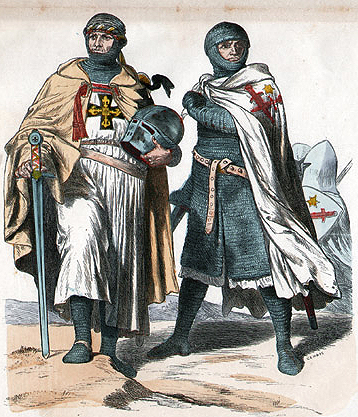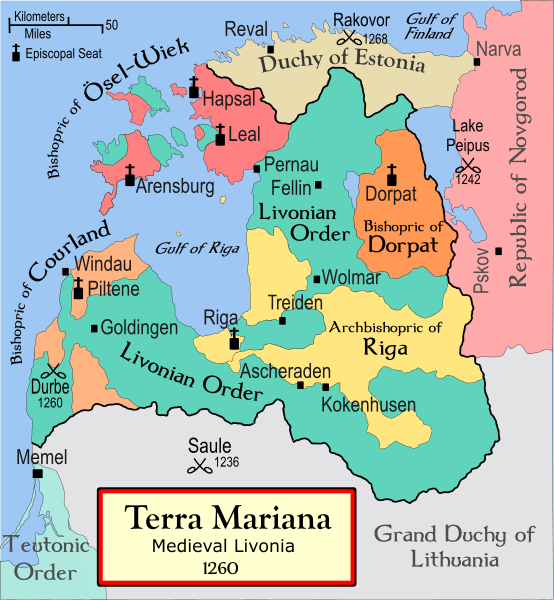The Livonian Brothers of the Sword
Fratres militiæ Christi Livoniae
Bishop Albert of Riga founded the military
order of the Livonian Brothers of the Sword (Latin: Fratres militiæ Christi Livoniae, German: Schwertbrüderorden)
in 1202; Pope Innocent III sanctioned the establishment in 1204. The membership of the order comprised German "warrior
monks". Alternative names of the Order include the Christ Knights, Sword Brethren, and The Militia of Christ of Livonia. Following their defeat by the Samogitians and Semigalians in the Battle of Schaulen (Saule)
in 1236, the surviving Brothers merged into the Teutonic Order as an autonomous branch and became known as the Livonian Order.

Albert, Bishop
of Riga (or Prince-Bishop of Livonia), founded the Brotherhood in 1202 to aid the Bishopric of Livonia in the conversion of
the pagan Livonians, Latgalians and Selonians living across the ancient trade routes from the Gulf of Riga eastwards. From
its foundation, the undisciplined Order tended to ignore its supposed vassalage to the bishops. In 1218 Albert asked King
Valdemar II of Denmark for assistance, but Valdemar instead arranged a deal with the Brotherhood and conquered the northern
Estonia (now known as Danish Estonia) for Denmark.

The Brotherhood
had its headquarters at Fellin (Viljandi) in present-day Estonia, where the walls of the Master's castle still stand. Other
strongholds included Wenden (Cēsis), Segewold (Sigulda) and Ascheraden (Aizkraukle). The commanders of Fellin, Goldingen
(Kuldīga), Marienburg (Alūksne), Reval (Tallinn), and the bailiff of Weißenstein (Paide) belonged to the five-member
entourage of the Order's Master. Pope Gregory IX asked the Brothers to defend
Finland from the Novgorodian attacks in his letter of November 24, 1232. However, no known information regarding the knights'
possible activities in Finland has survived. (Sweden eventually conquered Finland following the Second Swedish Crusade in
1249.)

The 1241 Treaty between Livonian Order, Bishopric
of
Ösel-Wiek and Oeselians at National Archives of Sweden
The Order was decimated in the Battle of Schaulen (Saule) in 1236 against
Lithuanians and Semigallians. This disaster led the surviving Brothers to become incorporated into the Order of Teutonic Knights
in the following year, and from that point on they became known as the Livonian Order. They continued, however, to function
in all respects (rule, clothing and policy) as an autonomous branch of the Teutonic Order, headed by their own Master (himself
de jure subject to the Teutonic Order's Grand Master).



The Masters of The Livonian Order
* Wenno (von Rohrbach)
1204-1209
* Volkwin (Schenk von Winterstein) 1209-1236
